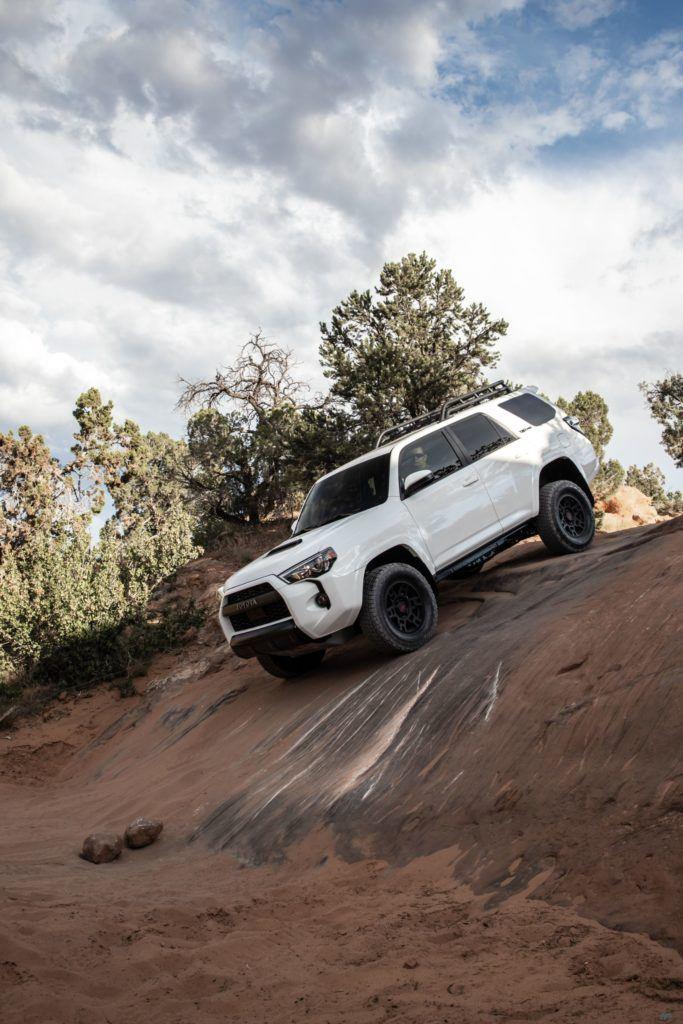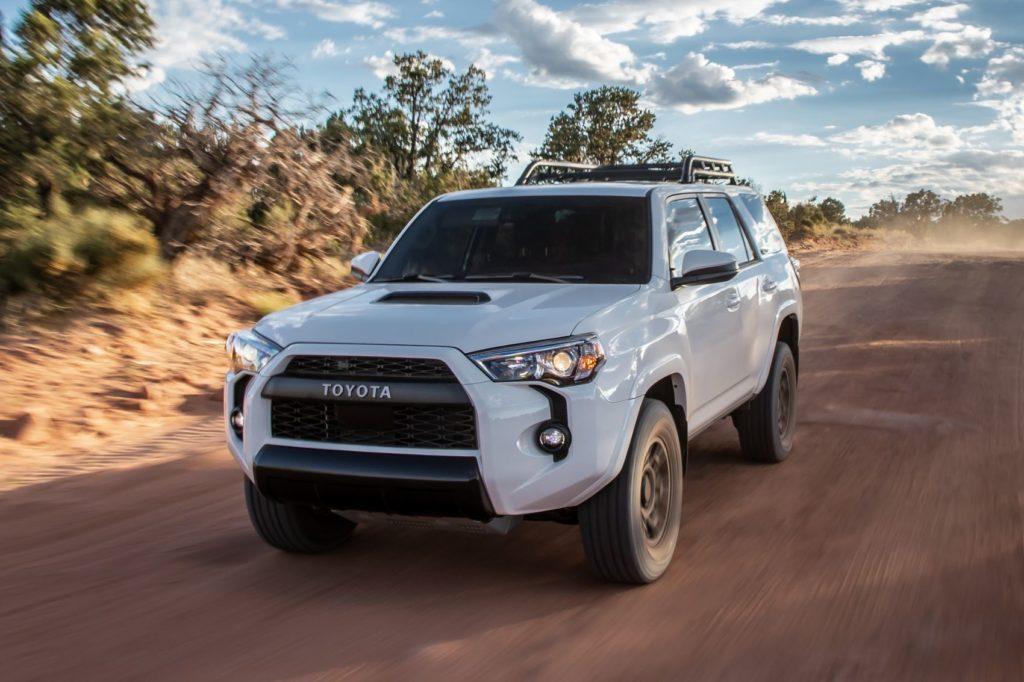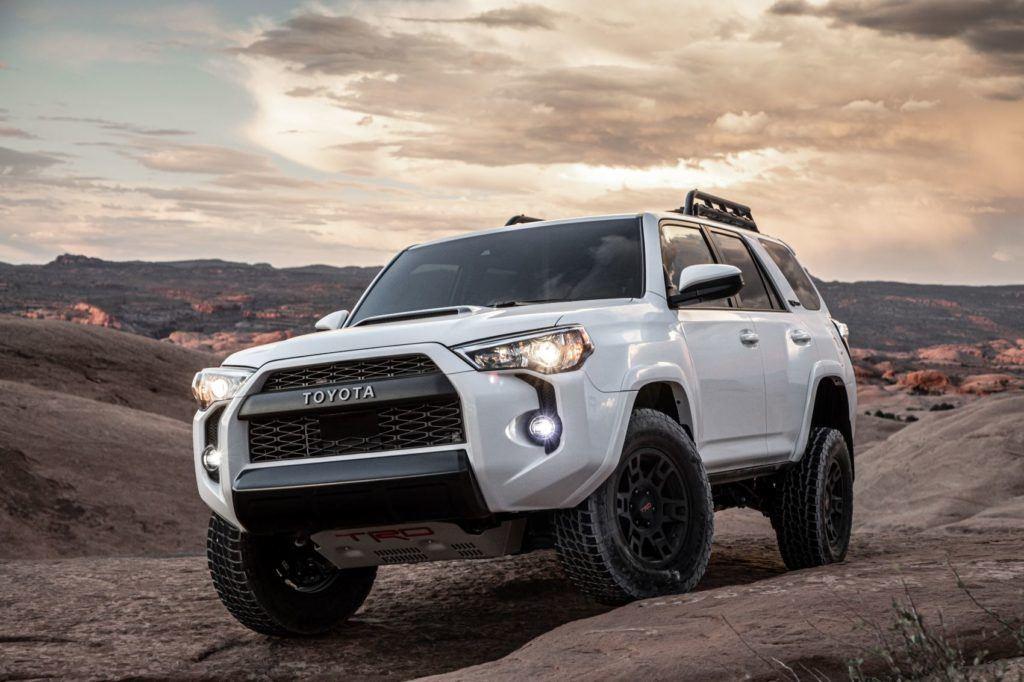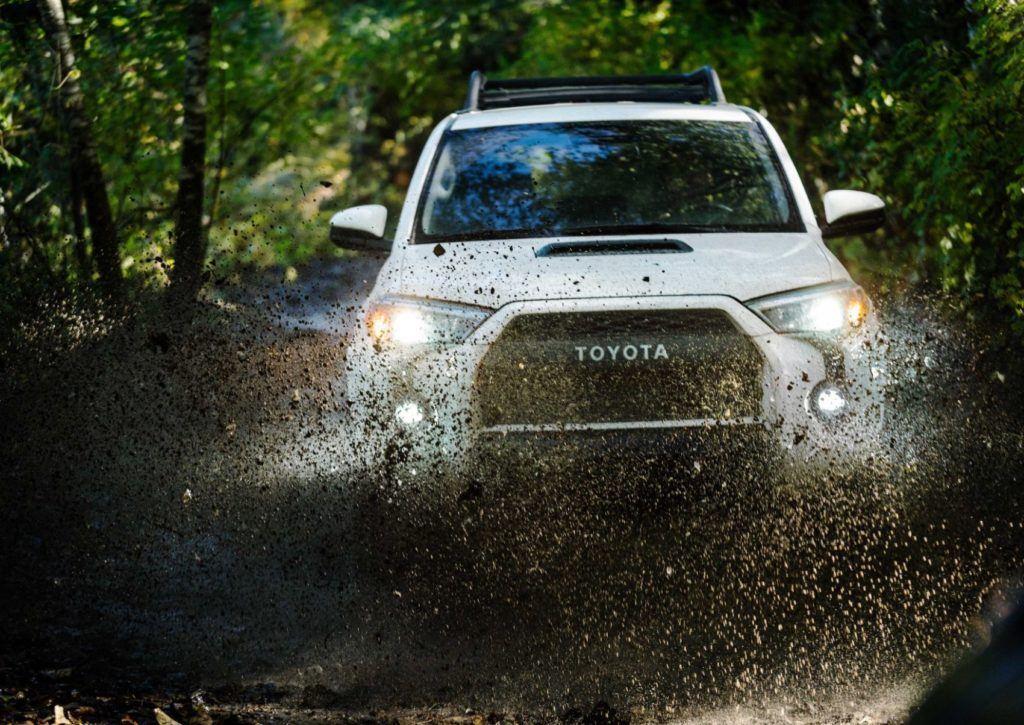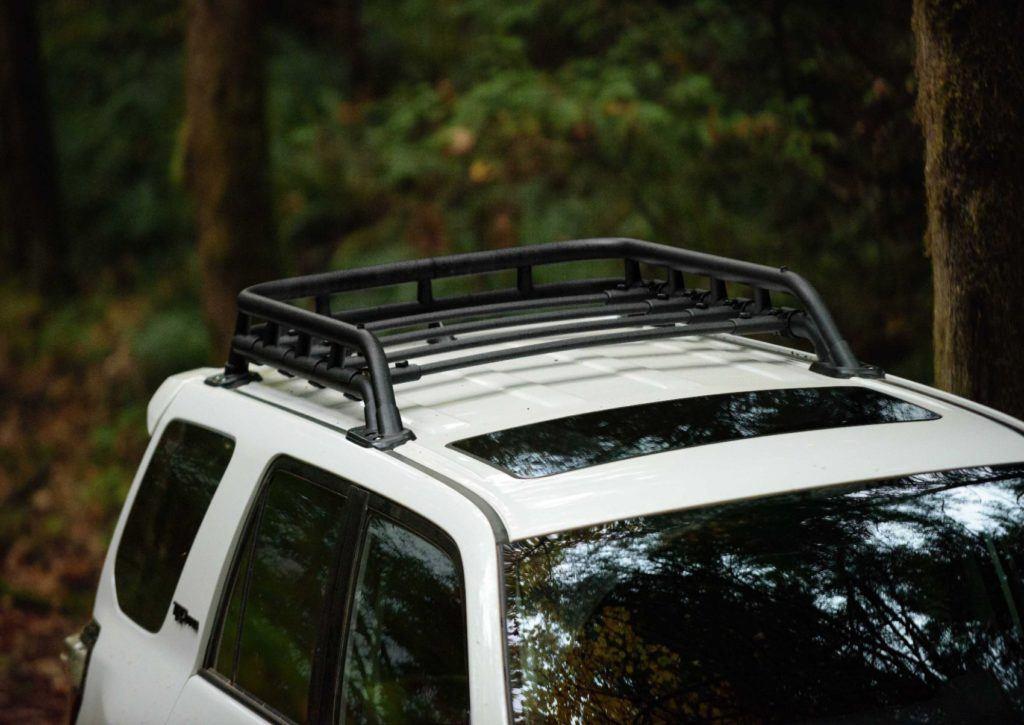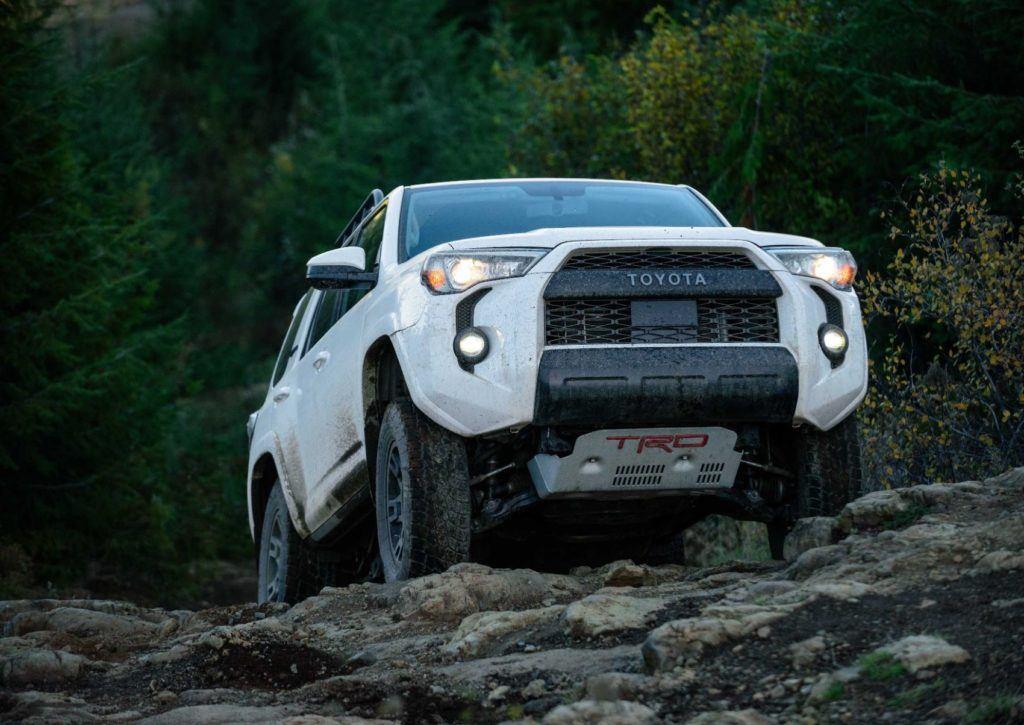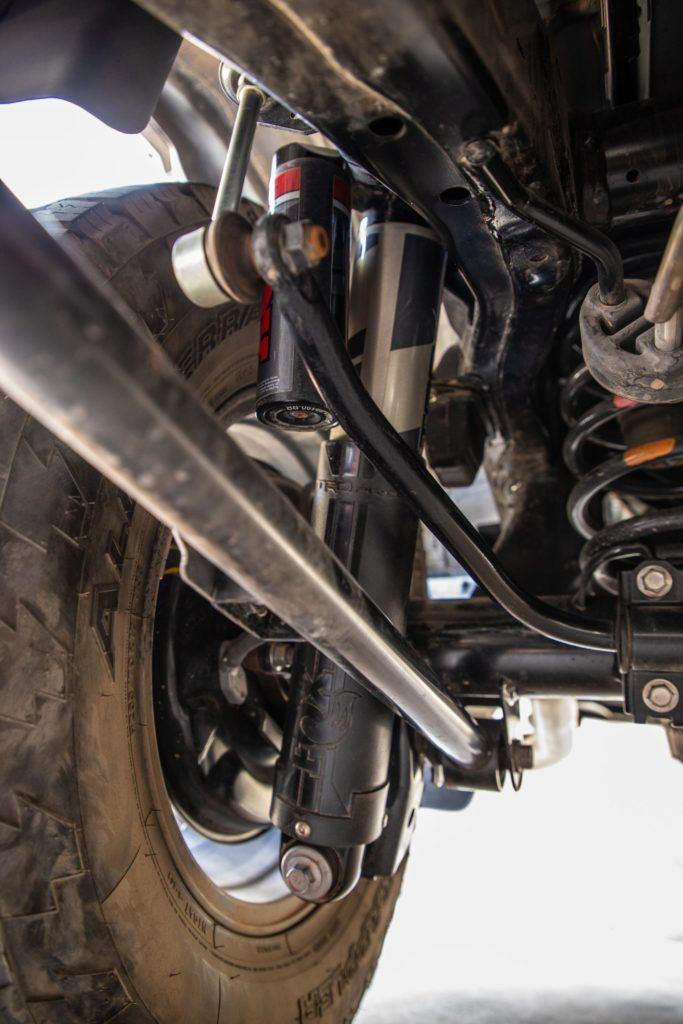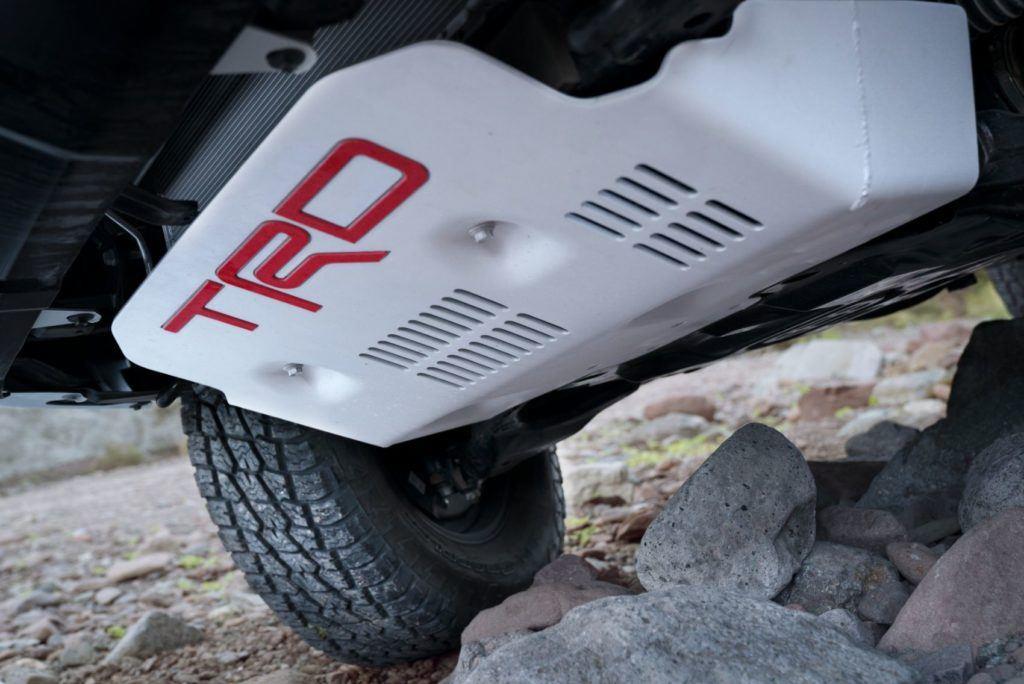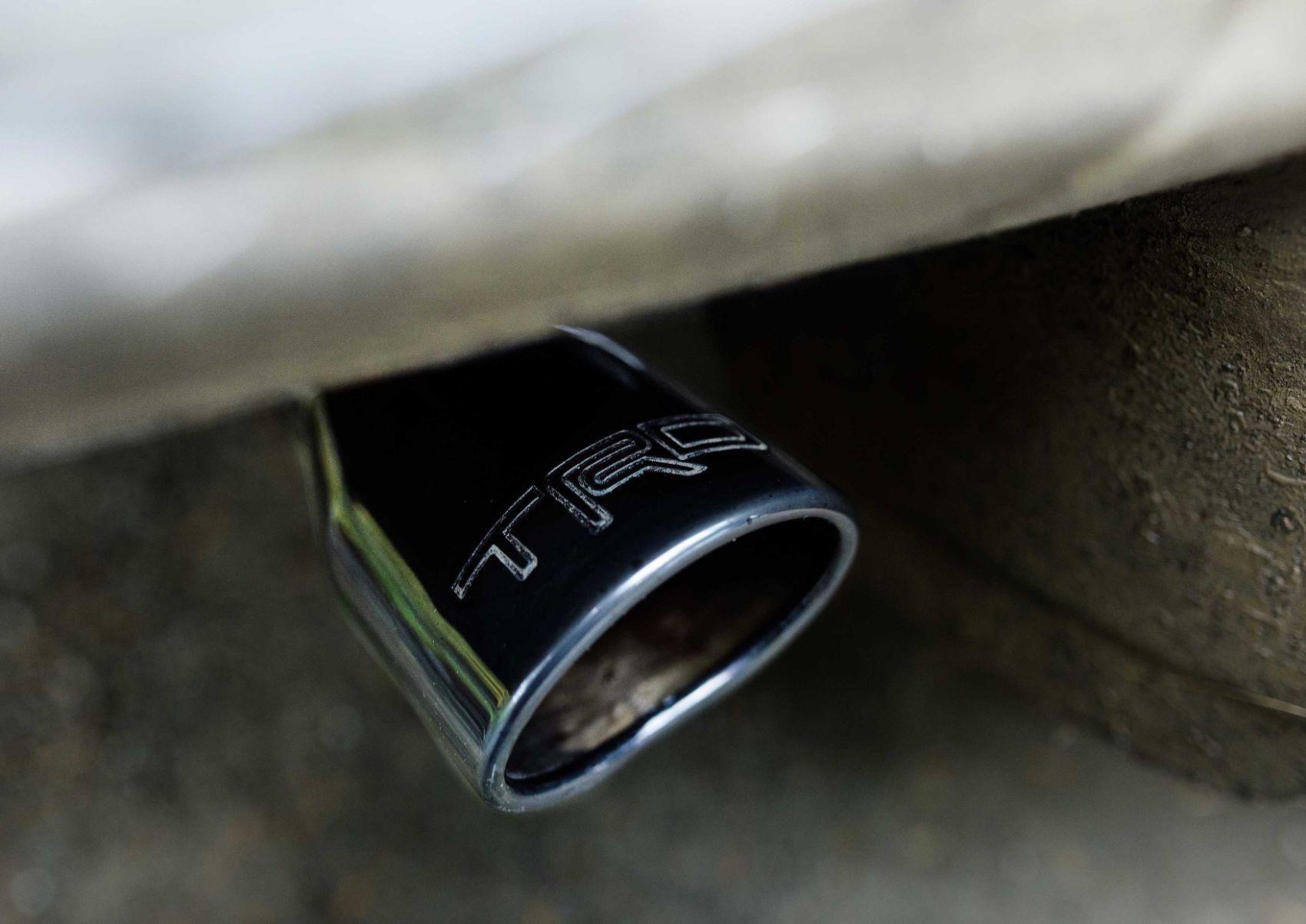 2020 Toyota 4Runner TRD Pro Our Editorial Opinion: The 4Runner TRD Pro is for a specific customer who wants a specific look and a specific feature set (off-road in this case). This is not necessarily good or bad. Just something to keep in mind when purchasing the 4Runner range. TRD Pro is your ticket for trail riding and serious off-road riding. Otherwise, we offer a Premium or Limited package. They still have off-road capability, but are a bit more tame than the TRD Pro. Exterior Styling85Interior Layout80Driving Dynamics73Safety & Specifications87Everyday Functionality83SoftwareSafetySafety TechTruck CapacityOff-Road Capabilities ConsNoisy CabinPremodern DesignFuel Efficiency82
2020 Toyota 4Runner TRD Pro Our Editorial Opinion: The 4Runner TRD Pro is for a specific customer who wants a specific look and a specific feature set (off-road in this case). This is not necessarily good or bad. Just something to keep in mind when purchasing the 4Runner range. TRD Pro is your ticket for trail riding and serious off-road riding. Otherwise, we offer a Premium or Limited package. They still have off-road capability, but are a bit more tame than the TRD Pro. Exterior Styling85Interior Layout80Driving Dynamics73Safety & Specifications87Everyday Functionality83SoftwareSafetySafety TechTruck CapacityOff-Road Capabilities ConsNoisy CabinPremodern DesignFuel Efficiency82
The Toyota 4Runner is getting longer in the teeth and needs a complete overhaul. But even though the SUV hasn't changed much, in 2020 it will get new advanced safety features, Apple CarPlay and Android Auto, and a few other technical innovations for buyers. Despite its age, the 4Runner is still the go-to family vehicle for active customers. who want something tougher for off-pavement excursions. And the 4Runner TRD Pro takes it to the next level.
We drove a 2020 Toyota 4Runner TRD Pro this week.
Toyota 4Runner: what's new in 2020?
Toyota 4Runner gets new advanced driver safety features (Toyota Safety Sense P). Standard on every 4Runner are: Pre-Collision System with Pedestrian Detection; Lane departure warning with sway warning system; Automatic high beam; and high-speed dynamic radar cruise control.
The new eight-inch touchscreen infotainment system now includes Apple CarPlay, Android Auto and Amazon Alexa. Rear passengers get two additional USB ports.
New for 2020 is the 4Runner Venture Edition, perfect for those looking to spend a weekend in the mountains. Standard features include a standard Yakima Megawarrior roof rack, all-weather floor mats, and 17-inch Gunmetal color TRD wheels.
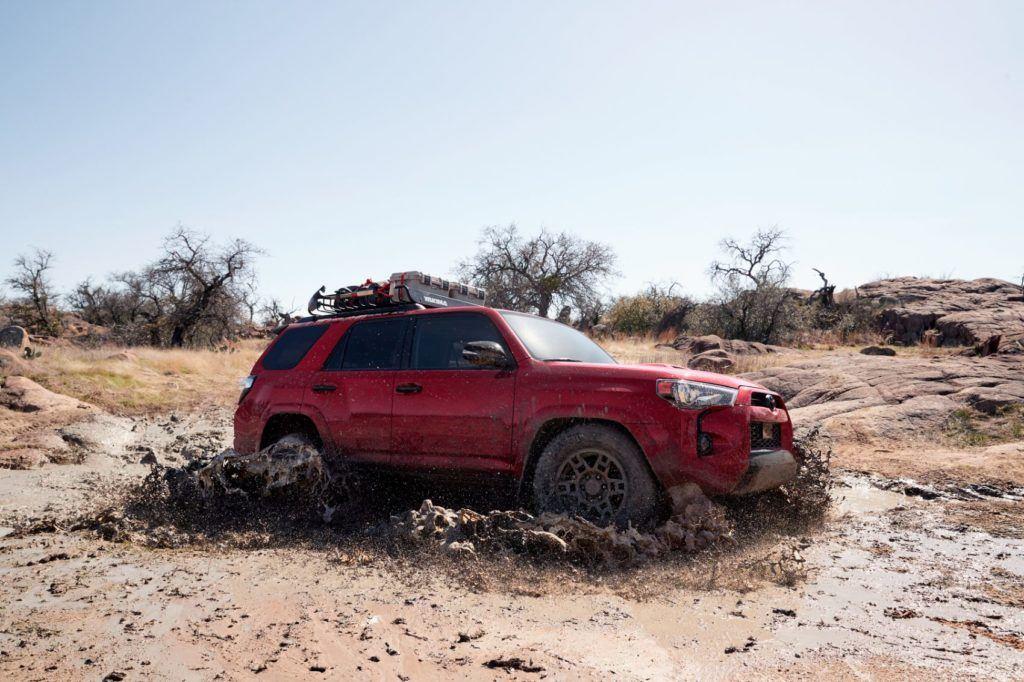 2020 Toyota 4Runner Venture Edition.
2020 Toyota 4Runner Venture Edition.
Features & Options: For SUV Pro
Our 2020 Toyota 4Runner TRD Protester ($ 49,765) came standard with skid plates, fog lights, a 120V socket in the cargo area, and a power rear window. TRD Pro adds a locking rear differential, off-road Multi-Terrain Select settings, crawl control, and a tow hitch receiver.
The TRD Pro is for the serious adventurer and comes with TRD tuned springs, 2.5" Fox front shocks and 2.5" Fox rear shocks with internal bypass and extra reservoirs. Nitto Terra Grappler tires, a unique front grille, black bumper inserts and a TRD shift knob are also standard. It also gets power and heated front seats, a 15-speaker JBL sound system, and plenty of TRD Pro accents inside and out.
Options on our TRD Pro tester included footpegs, a sliding rear cargo bed, a load divider and an awning.
How much does a 2020 Toyota 4Runner cost?
The total MSRP, including destination, for our TRD Pro tester is $52,147. By comparison, the 2020 Toyota 4Runner starts at $36,120 in SR5 trim. TRD Pro starts at $49,865.
If you're considering a new 4Runner, this free and easy search tool* will help you find the best price. Depending on local incentives and stock availability in your area, you may be able to purchase below the MSRP.
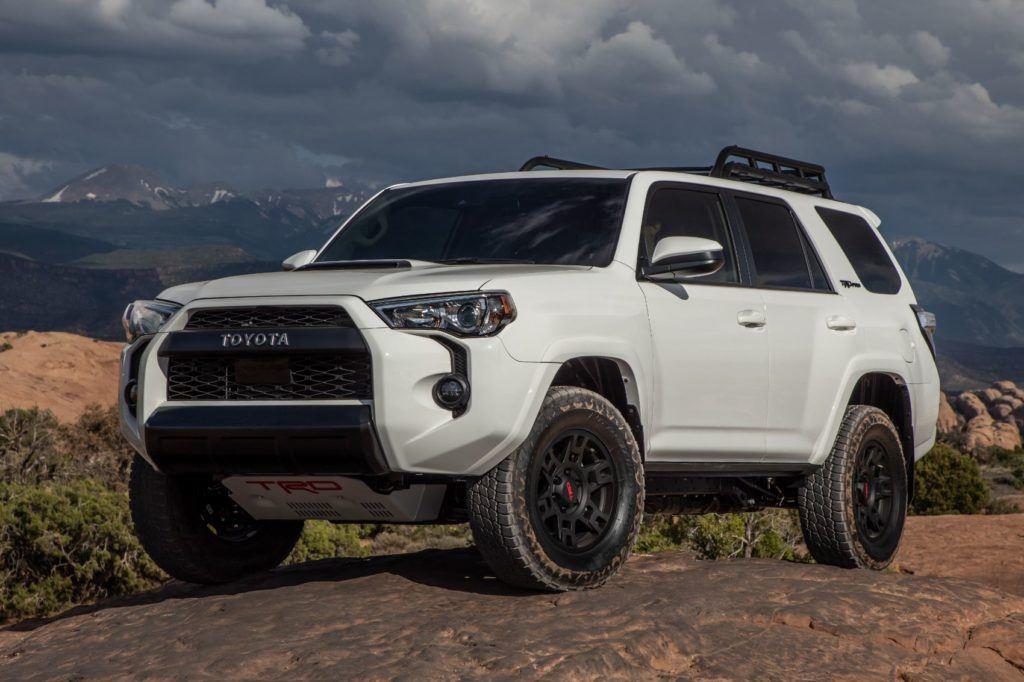 2020 Toyota 4Runner TRD Pro.
2020 Toyota 4Runner TRD Pro.
Interior features: simple and clean
With the 4Runner and its higher ground clearance, you can opt for footpegs, especially if you have children or shorter family members. However, you'll get excellent visibility from the driver's seat and extras such as power and heated front seats. The soft-Tex fabric makes it easy to clean up when you get home from the trail. You'll also get superior sound from JBL's upgraded 15-speaker system, navigation, push-button start and power sliding rear window.
The all-black interior of our tester was simple and uncluttered, with user-friendly controls. The off-road controls are located overhead, so the center console is clean with plenty of usable storage space. There's not a lot of chrome and glamor here because it's not in the 4Runner style.
Interior features: back relaxation
The second row seats fold down and tilt up to 16 degrees to provide extra comfort for rear seat passengers on long journeys. Passengers have plenty of legroom and can stretch out and take in the scenery. Behind the second row seats there is a large cargo area for camping, fishing or hunting equipment, but if you need more space, the rear seats fold down. The sliding rear cargo deck with underfloor storage is ideal for changing muddy shoes and storing the day's catch.
The movable rear cargo deck and bulkhead prevent items from the rear from sliding off and being damaged. Nice extra touch that only costs $350 but worth it.
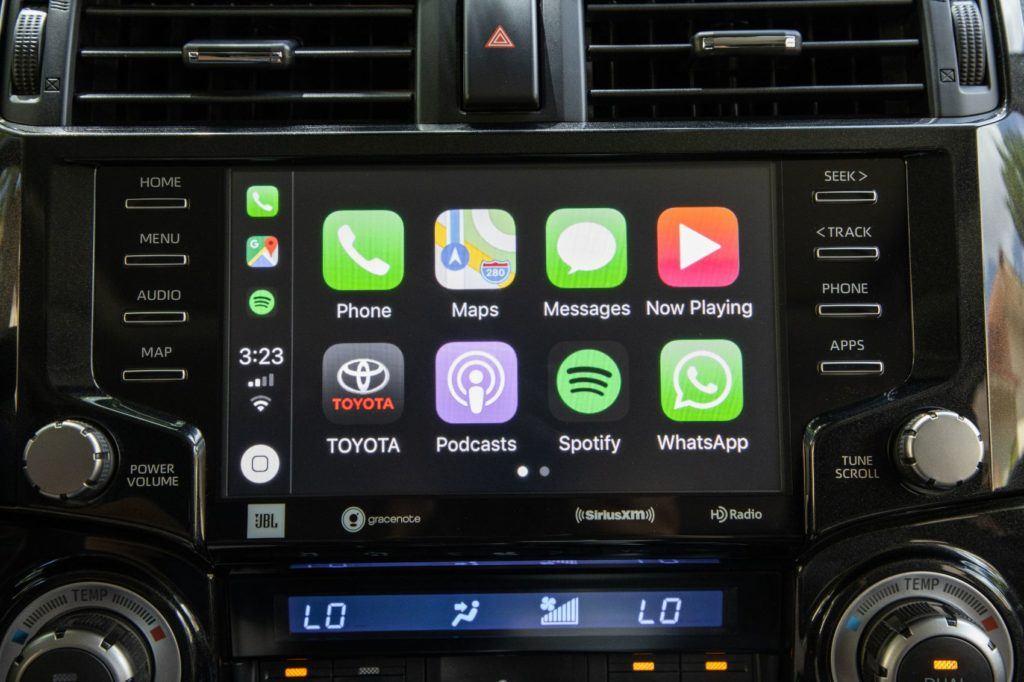 2020 Toyota 4Runner TRD Pro infotainment screen.
2020 Toyota 4Runner TRD Pro infotainment screen.
2020 Toyota 4Runner: engine and transmission
The 4Runner TRD Pro is powered by a 4.0-liter V6 engine producing 270 horsepower and 278 lb-ft. torque. It is mated to a five-speed automatic transmission with a partial four-wheel drive system and active traction control (which includes a two-speed transfer case with selectable low range). The TRD Pro also features a lockable rear differential, slow motion, start assist and Multi-Terrain Select. The latter allows the driver to select the mode that best suits the terrain ahead, be it mud, sand or slopes.
When properly equipped with a hitch and harness, all 4Runner models can tow 5,000 pounds. EPA ratings for our TRD Pro tester were 16/19 city/highway and 17 mpg combined. Needless to say, on a long journey you won't pass by many gas stations.
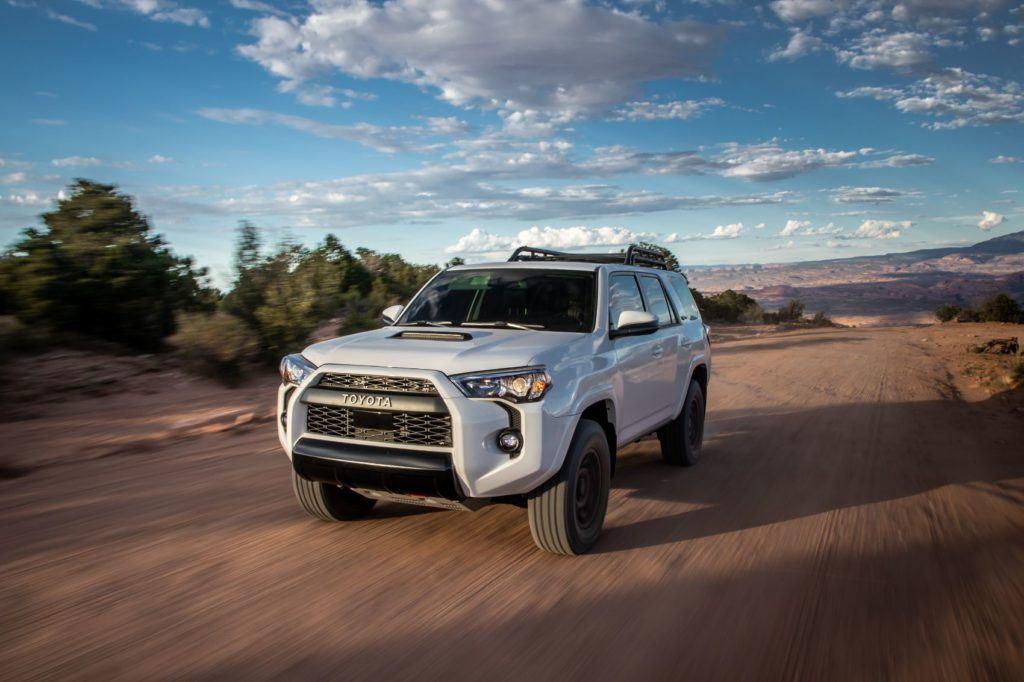 The 2020 Toyota 4Runner TRD Pro is fitted with 17-inch Nitto Terra Grappler tires.
The 2020 Toyota 4Runner TRD Pro is fitted with 17-inch Nitto Terra Grappler tires.
How does the Toyota 4Runner TRD Pro work?
You'll feel like an off-road warrior in the 4Runner TRD Pro, and it's fully equipped to take you deep into the highlands without getting stuck. With stiffer off-road suspension, the TRD Pro is fitted with 17-inch Nitto Terra Grappler All-Terrain tires. Large all-terrain tires provide extra ground clearance so you can tackle any obstacles you might encounter in the wild.
By comparison, the 4Runner TRD Pro performs well enough to be used as a daily commuter or family hauler. Its handling and maneuverability are good for urban use. We were really surprised at how well he handled traffic in Denver this week.
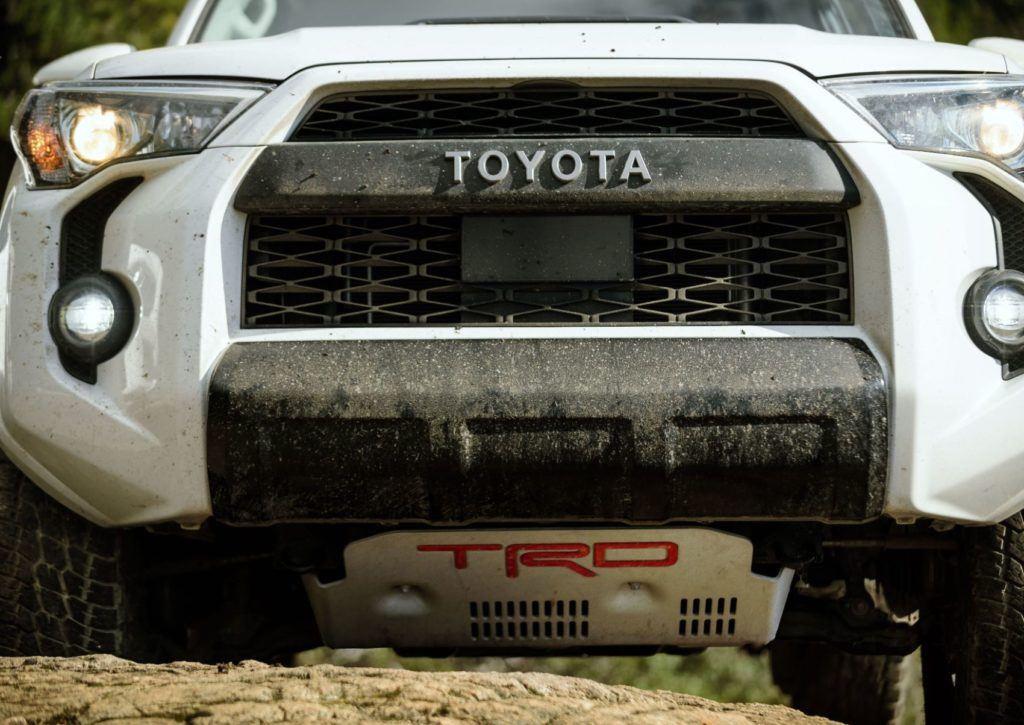 While the 2020 Toyota 4Runner TRD Pro is suitable for off-road use, it was reasonably composed in the city.
While the 2020 Toyota 4Runner TRD Pro is suitable for off-road use, it was reasonably composed in the city.
Driving dynamics: a bit shy and noisy
The 4.0-liter V6 engine with a five-speed automatic provided decent acceleration, but left us needing more power to drive at high altitudes above 8,300 feet where we live. 278 lb-ft. enough torque to get a large rig off the ground, and works particularly well as a tracked vehicle when climbing a steep slope. However, if you live in a hilly area, be prepared for the engine to run at high speeds.
We also felt the five-speed automatic was smooth and quick, but fell behind some of the newer automatics from competitors with more gears. More gears in the transmission would help improve the 4Runner's poor fuel economy.
The 4Runner TRD Pro is mostly comfortable for long trips, but with bigger tires there is more road noise. It sometimes seems like the higher ride height allows more noise to bounce off the undercarriage. If you're looking for a comfortable SUV ride, you'll want to check out the more luxurious Limited trim, but you're sacrificing off-road performance.
Conclusion: good for what it is
If you need an off-road adventure SUV but still need a family truck for everyday use, the Toyota 4Runner TRD Pro will suit your needs. It offers more off-road capability than any other in this segment. However, if you're after fuel economy and a quiet ride, the 4Runner TRD Pro shouldn't be your first choice.
Denis Flierl has worked in the automotive industry for over 25 years in various positions. All of his first-hand reviews are archived on our test drive page. Follow Denis on Twitter: @CarReviewGuy
2020 Toyota 4Runner TRD Pro Gallery
Photo: Toyota Motor Sales, USA, Inc.
* BlogAvto and its partners may be compensated if you follow this link.



